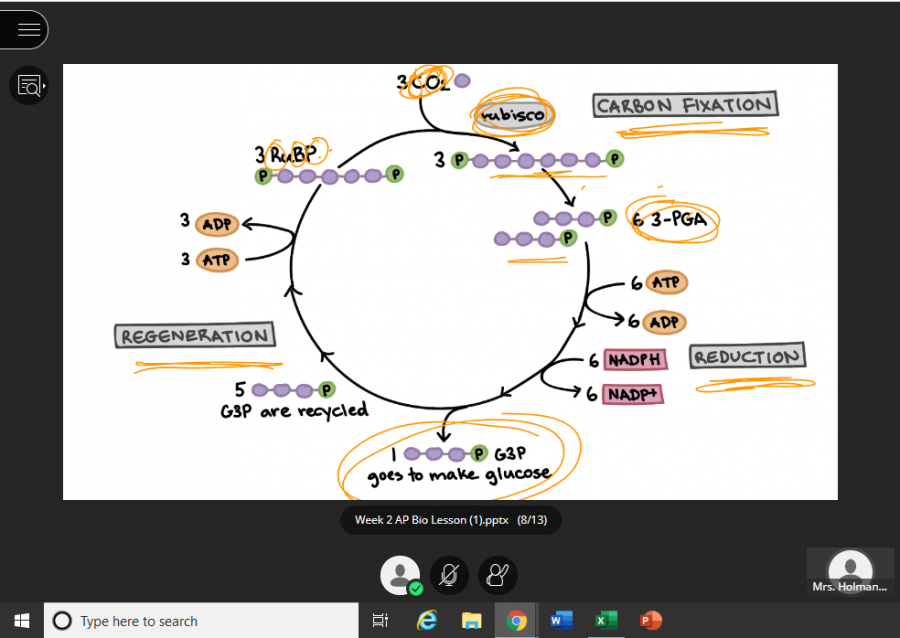Online needs some redesigns
Views on online learning through three weeks
Here, an AP Biology class reviews the Krebs cycle over the platform Blackboard Collaborate Ultra.
May 4, 2020
Online learning. It seems like a dream- the whole world of learning at your fingertips, never having to leave your home. And because of COVID-19 and a need for social distancing, it’s the new way to learn. After three weeks of FCPS’ distance learning situation, I determined there were definite benefits, but also concerns.
What I did like about the online classes were the platforms. Blackboard Collaborate Ultra and Google Classroom are teachers’ main tools for online education at this time, and they are quite nice. I enjoyed the many features of Blackboard Collaborate Ultra, including options for talking, sharing material, and working in groups. With newer updates, these platforms also help teachers take attendance and determine who is in class.
After the 45 minute synchronous classes, students have more time to get assignments done independently. Although this can be both a blessing and a curse, it’s mostly beneficial as it allows students to learn time management and focus time on subjects they need to work on. Students who thrive in structured environments and get distracted easily might have a more difficult time, but frankly, if time management is not your forte, now is the perfect time to work on it.
However, while these tools can help teachers and students alike run tasks efficiently, they also lack some functionalities that hinder the learning environment.
On these online platforms, it is harder for teachers to maintain a connection with the class. Many of my teachers ask questions to check in on how everyone is doing with the material and receive little to no response. Students are shier or less engaged over online tools, and without body language cues to pick up on, teachers are often left in an awkward position. The county mandates that video sharing is turned off for the majority of the calls, but I believe that having actual faces to see and interact with would help teachers. Students should be allowed to have video sharing on during calls to help teachers better regain a sense of their usual teaching environments.
Additionally, with school moved to an online environment for the rest of the year, students no longer have an immersive physical learning environment, which could be detrimental to their learning experiences. For example, science classes will lose laboratory experiment time because they cannot access the labs and materials at school, and people who learn through physical activities might have a less thorough understanding of the material because of it. Writing, typing, and working on the computer is not the same. Instead of these online-based activities, teachers could assign open-ended assignments with options to build/create physical projects and upload pictures. Uploading pictures of assignments already applies to written notes, so why not extend it to actual objects and creations?
In my opinion, nothing will ever replace the real-life classroom, and these online tools, while advanced, are not the same. While the many useful tools and platforms help us continue our educations, they do not function as effectively as real interpersonal contact and physical interactive learning. That being said, there are more measures that we, as a school and as a county, could take to mitigate the situation.






